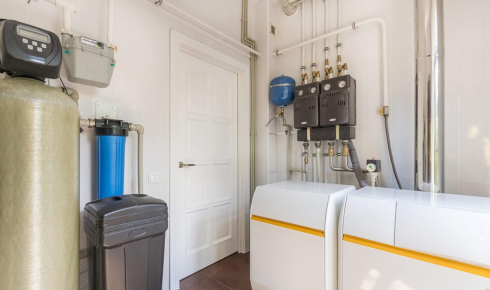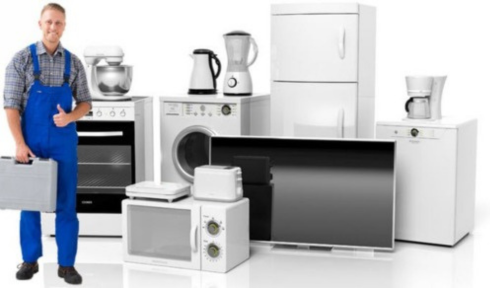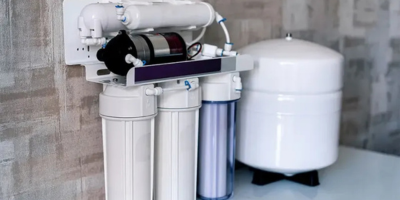The Importance of Indoor Air Quality in the Workplace
Indoor air quality plays a crucial role in maintaining a healthy and productive work environment. Poor air quality can lead to various health issues among employees, such as allergies, respiratory problems, and fatigue. Inadequate ventilation can trap indoor pollutants, including dust, mold, and volatile organic compounds, compromising the well-being of those working in the space.In addition to physical health concerns, indoor air quality also impacts mental acuity and focus. Proper ventilation ensures a steady supply of fresh air, helping employees stay alert and engaged throughout the workday. Furthermore, a well-ventilated workplace can create a more comfortable atmosphere, leading to higher job satisfaction and overall morale among the staff.
Commercial Ventilation is essential for maintaining a healthy workplace. Proper ventilation helps remove indoor pollutants, ensuring employee well-being. Fresh air supply improves focus and job satisfaction, creating a comfortable and productive work environment.
How Poor Ventilation Can Impact Employee Health
Poor ventilation in the workplace can have significant repercussions on employee health. When indoor air quality is compromised due to inadequate ventilation, employees may experience a range of health issues. These can include headaches, dizziness, fatigue, and respiratory problems. Without proper airflow to circulate and refresh the air, pollutants and allergens can build up, exacerbating existing conditions or leading to new health concerns.Moreover, poor ventilation can also contribute to the spread of illnesses among employees. In enclosed spaces with limited airflow, germs and viruses can linger in the air for longer periods, increasing the likelihood of infections. This can result in higher rates of absenteeism as employees fall ill more frequently. Additionally, poor ventilation can hinder recovery times for those who do get sick, prolonging the duration of illnesses and impacting overall productivity in the workplace.
The Role of Ventilation in Preventing the Spread of Germs
Proper ventilation plays a crucial role in maintaining a healthy indoor environment by helping to prevent the spread of germs. In workplaces where ventilation is inadequate, airborne particles such as viruses can linger in the air, increasing the risk of respiratory infections among employees. By ensuring that fresh air is continuously circulated and stale air is expelled, ventilation systems help reduce the concentration of contaminants in the air, lowering the chances of individuals inhaling harmful germs.In addition to reducing the transmission of airborne diseases, effective ventilation can also minimize the buildup of moisture in indoor spaces. High humidity levels can create a breeding ground for mold and mildew, which not only impact employee health but also contribute to unpleasant odors and a generally uncomfortable work environment. By controlling humidity levels through proper ventilation, businesses can create a healthier and more pleasant workspace for their employees.
How Proper Ventilation Can Improve Employee Productivity
Proper ventilation in the workplace plays a pivotal role in enhancing employee productivity. Stale, poorly circulated air can lead to a decrease in oxygen levels, making employees feel drowsy, unfocused, and overall less productive. When the air is stagnant, it can create a sense of stuffiness that affects cognitive abilities and concentration levels.By ensuring a constant flow of fresh air, proper ventilation aids in maintaining a comfortable and invigorating environment for employees. Improved air quality can help reduce the presence of airborne pollutants and allergens, creating a healthier workspace that fosters employee well-being. When employees feel alert, refreshed, and comfortable in their surroundings, they are more likely to stay engaged and perform at their best throughout the workday.
The Connection Between Indoor Air Quality and Respiratory Issues
Indoor air quality plays a pivotal role in the respiratory health of employees within a workplace. Poor indoor air quality, characterized by pollutants like dust, mold, and volatile organic compounds, can trigger respiratory issues such as allergies, asthma, and respiratory infections. When ventilation systems are inadequate or not properly maintained, these harmful particles circulate in the air, posing a risk to the respiratory systems of individuals working in the environment.In workplaces where indoor air quality is neglected, employees may experience an uptick in respiratory symptoms, leading to reduced productivity and increased absenteeism. Individuals with pre-existing respiratory conditions are particularly vulnerable in such settings, as poor indoor air quality can exacerbate their symptoms and have a more significant impact on their overall health. Companies that prioritize maintaining good indoor air quality through proper ventilation systems not only promote a healthier work environment but also contribute to the well-being and performance of their employees.
Natural Home Solutions offer solutions to improve indoor air quality. By addressing pollutants like dust and mold, they help prevent respiratory issues that can impact employee health and productivity. Prioritizing good indoor air quality through proper ventilation systems is essential for maintaining a healthy work environment.
The Effects of Poor Ventilation on Employee Attendance
Poor ventilation in the workplace can have a direct impact on employee attendance. When indoor air quality is compromised due to inadequate ventilation, employees may experience heightened symptoms of allergies, respiratory issues, and fatigue, leading to increased sick days and absences. The lack of fresh air circulation can exacerbate existing health conditions and make employees more susceptible to illnesses, resulting in frequent absenteeism that can disrupt workflow and productivity.In addition to physical health effects, poor ventilation can also contribute to discomfort and decreased morale among employees, further influencing attendance patterns. Stuffy and stagnant air can create an unpleasant work environment that may lead employees to feel unmotivated or unwell, prompting them to take more time off work. Addressing ventilation issues in the workplace is crucial not only for maintaining a healthy and inviting atmosphere but also for fostering a positive work culture that encourages consistent attendance and engagement.
How Ventilation Can Help Reduce Sick Days
Proper ventilation plays a vital role in creating a healthy work environment by reducing the concentration of indoor air contaminants. When indoor air quality is poor, employees are more susceptible to respiratory illnesses and allergens, leading to increased sick days. Ventilation systems help to remove pollutants, such as volatile organic compounds and airborne pathogens, that can compromise the immune system and contribute to respiratory issues.By enhancing air circulation and maintaining optimal humidity levels, ventilation systems can mitigate the spread of airborne illnesses within the workplace. Improved air quality reduces the transmission of germs and bacteria, ultimately decreasing the likelihood of employees falling ill and necessitating time off work. Investing in a quality ventilation system is not only beneficial for employee health and wellbeing but also contributes to a more productive and efficient work environment.
The Benefits of Investing in a Quality Ventilation System
Investing in a quality ventilation system for your workplace can yield a multitude of benefits for both employees and the overall environment. Improved indoor air quality resulting from efficient ventilation can lead to a decrease in the spread of germs and allergens, creating a healthier workspace for all. By ensuring proper ventilation, you can help reduce the risk of respiratory issues and other health concerns commonly associated with poor air circulation.Furthermore, a quality ventilation system can play a vital role in enhancing employee productivity. Fresh and well-ventilated air can help employees feel more alert, focused, and energized, ultimately boosting their performance and efficiency at work. Investing in a ventilation system is not only a smart choice for the health and well-being of your employees but also a strategic decision to promote a positive and productive work environment.
Tips for Improving Ventilation in the Workplace
Improving ventilation in the workplace is crucial for maintaining a healthy and productive environment for employees. One effective tip is to regularly inspect and clean air ducts and vents to ensure proper airflow. Dust, dirt, and debris can accumulate over time, hindering ventilation systems from functioning optimally. By scheduling routine maintenance, you can help prevent blockages and ensure that fresh air circulates efficiently throughout the workspace.Another tip for enhancing ventilation is to strategically place indoor plants around the office. Not only do plants add a touch of nature to the environment, but they also act as natural air purifiers, removing toxins and impurities from the air. Choosing plants known for their air-purifying qualities, such as spider plants or peace lilies, can help improve indoor air quality and promote a healthier atmosphere for employees to thrive in.
The Long-Term Impact of Good Ventilation on Employee Wellbeing
Good ventilation in the workplace is critical for the long-term wellbeing of employees. By ensuring a constant flow of fresh air, a quality ventilation system can help create a healthier indoor environment that supports overall health and productivity. Improved air circulation not only reduces the risk of respiratory issues but also helps in preventing the transfer of germs, leading to fewer sick days and increased employee attendance.Investing in a quality ventilation system can have lasting benefits for both employees and employers. By maintaining good indoor air quality, businesses can enhance employee satisfaction, retention, and even attract new talent. Over time, the positive impact of adequate ventilation on employee health and wellbeing can contribute to a more vibrant and thriving workplace environment.




